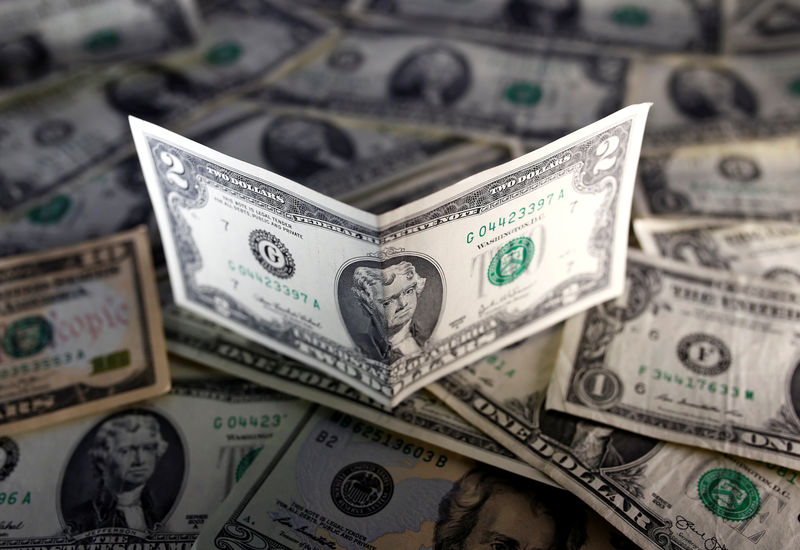By Gina Lee
Investing.com – The dollar was down on Wednesday morning in Asia, sliding to a three-year low against the GBP and recording losses against commodities currencies, as increased bets that the global economic recovery from COVID-19 will whet investors’ risk appetite.
The U.S. Dollar Index that tracks the greenback against a basket of other currencies edged down 0.10% to 90.032 by 9:14 PM ET (2:14 AM GMT).
The USD/JPY pair edged up 0.15% to 105.39.
The AUD/USD pair was up 0.35% to 0.7937. The AUD, a usual beneficiary of rising metal and energy prices, climbed to near a three-year high. The NZD/USD pair was up 0.40% to 0.7369.
The USD/CNY pair inched down 0.09% to 6.4585.
The GBP/USD pair gained 0.43% to 1.4171. The pound rose to its highest level since April 2018 after U.K. Prime Minister Boris Johnson introduced a plan to ease current lockdown restrictions in stages as the country continues its rapid COVID-19 vaccine rollout.
The dollar traded close to a six-week low against the euro.
The NZD was the focus of attention as the Asian session opened. The Reserve Bank of New Zealand (RBNZ) said that it would keep its interest rate unchanged at 0.25% earlier in the day, in line with expectations. Investors had also been on the lookout for comments from RBNZ officials that were positive about economic prospects.
However, some investors told Reuters that the central bank could increase rates by the end of 2022 as its economy recovers more quickly than expected from COVID-19.
Across the Pacific Ocean, U.S. Federal Reserve Chairman Jerome Powell reiterated the central bank’s commitment to low interest rates and bond purchases to support the U.S. economic recovery. However, the Fed support could be a long-term negative factor for the greenback.
“Signs of economic recovery are lifting commodities prices, which in turn supports currencies of commodities exporters … risk appetite has improved a lot, and this leaves the dollar at a big disadvantage,” IG Securities foreign exchange strategist Junichi Ishikawa told Reuters.
Powell also dismissed concerns that loose monetary policy could lead to inflation and financial bubbles which have dominated 2021 so far as skepticism grows over the rally in global stocks.
Simultaneously, investors are turning to currencies that stand to gain from the increased global trade, and countries that are making progress on their COVID-19 recoveries, also contributing to the dollar’s decline.
Meanwhile, central bankers whose economies saw less disruption from COVID-19 face the opposite dilemma of whether to tighten their monetary policies. Should they start doing so, the dollar will lose even more of its appeal, some investors warned.
